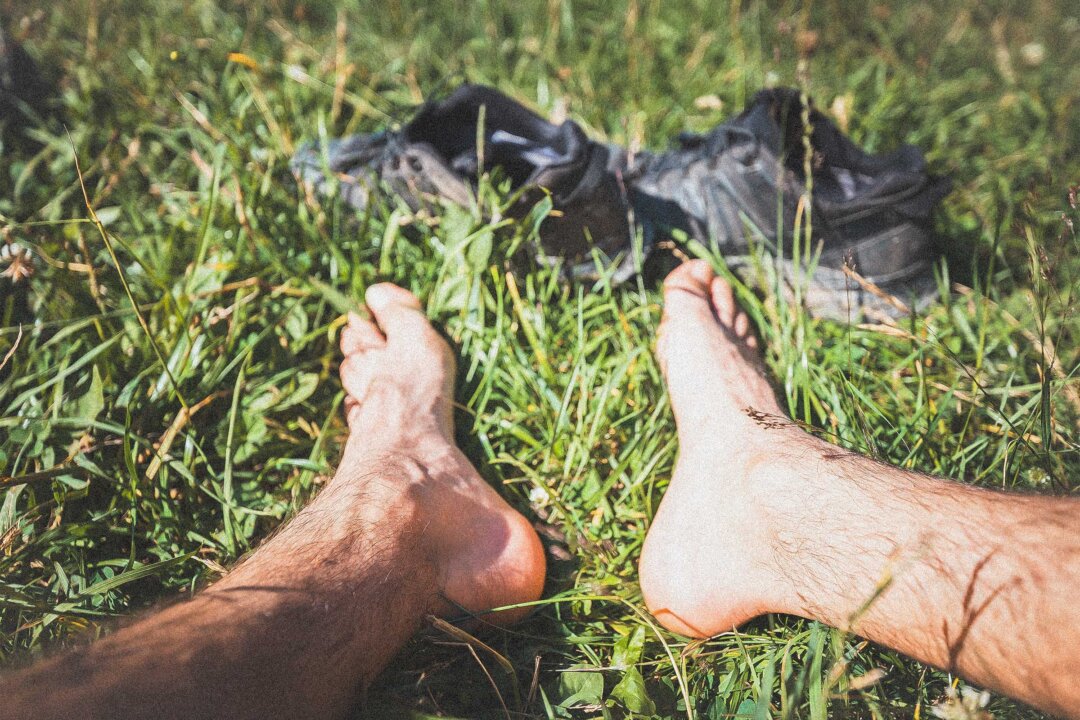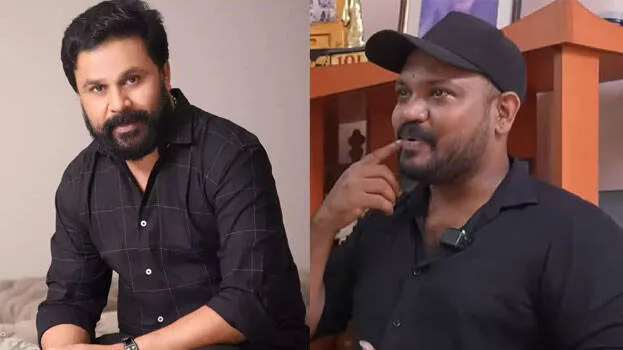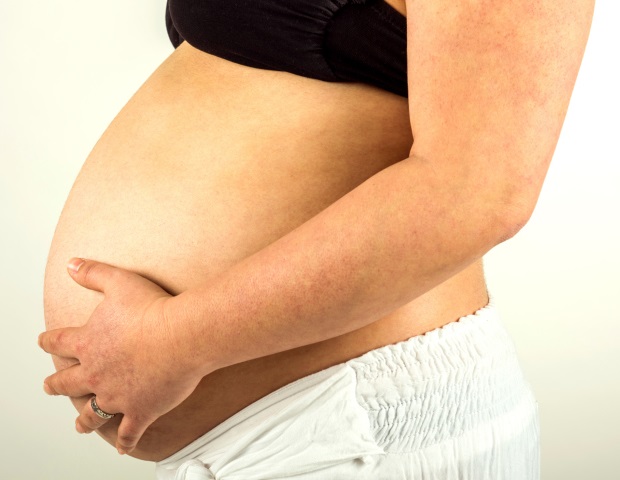
Frustrated by her clunky and narrow hiking boots, Kelly Barcus began researching online to find something better. She quickly encountered an unfamiliar term: “barefoot shoes.” The concept of “barely there” shoes certainly didn’t seem appropriate for the bumpy, wet, unpredictable miles of terrain she covered on her hikes.
“I was still in the mindset that I needed all this protection and support, almost like I didn’t know if my feet could handle it,” Barcus told The Epoch Times. However, she couldn’t shake the logic she encountered. Barefoot or minimal shoes feature a wide-toe box to alleviate cramped toes—common hiking maladies—which often cause blisters and ingrown toenails.

The thinner, flatter sole gives feet a better “read” of the ground, improving reaction time to uneven surfaces for better awareness and balance. She bought barefoot shoes but wore her trusty boots on her next backpacking trip and regretted it when she returned home with familiar aches and pains. “After that, I was done with hiking books and began to switch over all of my shoes to barefoot or minimalist shoes,” Barcus said.
That’s how Brittany Balinski learned about barefoot shoes. She went shoe shopping for her 1-year-old’s extra wide feet. After six months of trial and error—first grappling with the family pressure to pick a conventional first-baby shoe that she ended up hating and not finding a minimal shoe that fit right—Balinski asked for help online and discovered Wildlings, a German minimal shoe brand that’s still her favorite.
“I loved them so much, I decided I had to buy some for myself,” she told The Epoch Times. “I was pleased to learn that the whole barefoot shoe niche exists for adults as well. It does kind of make sense.
It only takes one look at your shoe collection to see that none of your shoes are actually shaped like feet.” Balinski’s mom, who grew up in the 1970s wearing platform shoes and wedges, had significant foot problems that later necessitated surgery on both feet. Balinski hoped to avoid this fate and figured minimal shoes might be her best bet.
After wearing a pair during a long day walking around at a baby expo, she noticed she didn’t feel the need to kick them off as soon as she got home. Balinski, now known as the UK’s barefoot shoe advocate, quickly began to plant seeds—starting in her own house—about the benefits of shoes that allow feet to function fully. Wearing typical shoes can be a form of deconditioning—like a cast that stabilizes bones and limits muscle movement.
Movement is like fuel for muscle metabolism. Any kind of exercise increases adenosine triphosphate (ATP), or cellular energy, which allows our bodies to perform involuntary functions like beating our hearts and breathing through our lungs. ATP also allows muscles to contract and relax.
Many people can’t switch over to barefoot shoes without experiencing pain, according to Dr. Emily Splichal, a podiatrist who travels internationally to train others in barefoot science and rehabilitation. It would be comparable to removing a cast for a broken femur and trying to run a race the next day.
Current and past foot injuries How much time you spend on your feet Your level of fitness/activity Foot strength Whether you do foot exercises Foot type—a high arch versus flat foot, rigidity, and toe length The study also noted that foot muscle strength helps improve stability and balance, reducing fall risk—a problem that affects nearly one-third of older people and can permanently compromise quality of life. Weight of the shoe Shoe flexibility, meaning the degree to which the sole can be folded, rolled, or twisted Heel-to-toe drop, common in most shoes’ interior design, not just high heels Stack height, or the amount of material between your skin and the ground Motion control or stability devices Take, for example, a nurse who wears expensive, comfortable Nike Vaporfly sneakers or Hokas during the day and minimal shoes for a daily gym workout. Even walking barefoot every day can help restore foot function, she said.
“To believe in minimal shoes, you don’t have to wear them all day. You can have fluidity in your shoes. You’re not either all in or all out,” Splichal said.
There are also variations—not to mention limitless designs—in minimal shoes. You can opt for a wide toe box, a moderate heel-to-toe drop, and a small amount of cushion and support. One thing to be mindful of is that minimal shoes are more susceptible to puncture due to a thinner sole.
The trend brought with it foot pain, and many of the modifications to shoes we’re familiar with today came about as a solution to those discomforts, Splichal said. Features like extra padding and support and a heel-to-toe drop that lessen heel strike pain became the norm—especially in sneakers. Today, it’s common to discover brides, grooms, and even entire wedding parties sporting more comfortable shoes like sneakers or minimal slip-on shoes like Crocs.
Balinski loves this trend, which she credits to Generation Z being more receptive and comfort-loving than previous generations. “There’s nothing to the shoe. It’s really just rubber and fabric around your foot.
There’s no cushion or technology in these shoes,” she said. “Why does a shoe like that have to cost several hundred dollars? To me it shouldn’t in a sense. Money doesn’t always equate value.
” Barcus, who transitioned her hiking blog to the Barefoot Shoe Guide after readers demanded more content on barefoot shoes, often compares big brands to budget brands. The benefit of budget shoes, she said, is that they are an affordable way to see if you like minimal shoes. However, they may lack durability and use lower-quality materials.
“Find an affordable pair and give it a try to see if you like it. Wearing them is believing,” Barcus said. “Find how it works in your life, and a little bit is better than nothing.
It doesn’t end up being a little bit because everyone I’ve talked to is like, ‘Now that I’ve tried these, I can’t go back. I can’t.’”.















